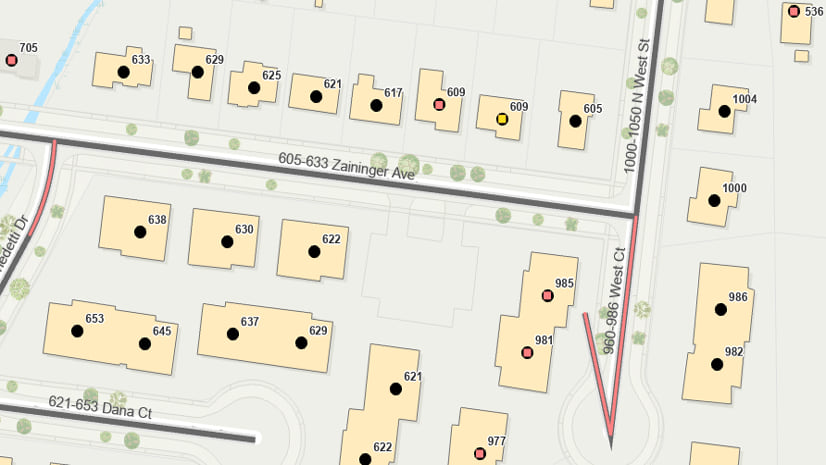On May 8, 2024, we held a webinar on Validating Data for Linear Referenced Assets.
Data quality management is crucial for organizations that rely on linear referenced data as their system of record for operation and management of their assets. ArcGIS Data Reviewer helps in automating and simplifying these workflows through ready-to-use data quality checks that identify features that do not meet data quality requirements.
In this webinar we covered:
- Why efficient data quality management is critical for your business
- Ready-to-use data quality checks for the Linear Referencing System (LRS) network
- Validation methods and implementation best practices for linear referenced features
You can now watch the webinar recording and explore our Q&A from the live session in this blog. If you cannot find the answers you were looking for, please post your questions on the ArcGIS Data Reviewer community place.
Technical Questions
Do the attribute rules apply when collecting data on field maps as well or is this a process you do after data has been collected?
Attribute rules are defined in ArcGIS Pro and can automatically populate attributes, restrict invalid edits during edit operations, and perform quality assurance checks on existing features. Datasets in enterprise geodatabases that contain attribute rules can be shared as a web feature layer to your organization’s ArcGIS Enterprise portal. Currently, attribute rules do not automatically apply in Field Maps. If you are working in a connected environment, then attribute rules will be executed on the server. Attribute rules are not currently supported offline. If you work offline the attribute rules will be executed once the data has been synced. If an attribute rule fails. the edit will fail but the error message on the rule will not display.
Where can we find a standard basic data model for roads and highways including these validations?
Published roads and highways data models typically do not include validation rules. This is primarily because the rules are configurable and users prefer to set their desired parameters.
It seems many of our Attribute Rules can really slow down editing speeds. What are some recommendations to avoid this?
Constraint and immediate calculation attribute rules execute during data editing, and this could affect performance if the ArcGIS architecture is not right sized to handle the operations. Suggest that users consult a system architect to evaluate the hardware and software infrastructure to identify those areas that could impact performance. Users are also encouraged to assess what attribute rules execute during editing and identify those rules that could be executed post-editing as either batch calculation or validation attribute rules instead.
Can a linear referencing system with measures be set up for a fixed route path with overlapping route segments?
ArcGIS Roads and Highways offers the capability to model concurrent routes with a set of rules to determine the dominant route.
Is this demo happening in a service or a file geodatabase?
The webinar demos were performed using data stored in a file geodatabase. Outside the requirement to share web feature layers, customers implementing Data Reviewer in a multi-user geodatabase will follow the same workflows when creating Reviewer-based attribute rules and evaluating feature quality in ArcGIS Pro.
Is it necessary to apply a date filter using the input filter on the rule itself? We have found that the validation rules do not respect time when enabled in the map itself.
Validation attribute rules do not currently support the ability to evaluate features based on a time filter. Instead, validation attribute rules can be configured to evaluate features only within a specified subtype and/or those features which are within a specified definition query when using Reviewer-based checks. Depending on your requirements, you may only want to implement rules on active features and exclude retired features.
What advice do you have for running validation checks against large datasets via a branch versioned service?
Re-evaluate the design of the attribute rule. Also consult a system architect to evaluate the hardware and software infrastructure.
Does the closes-on-self check find lollipops? It has only been catching lines that return to the begin point.
The Polyline or Path Closes on Self check finds polyline features or their individual paths that close on themselves. This includes polylines or paths that close (start points and endpoints are coincident) or those that contain multiple paths that result in a closure. The Check Geometry check may be a better choice if self-intersecting polylines (Not Simple geometry) are considered to be an error in the data.
What types of geodatabases are supported with attribute rules?
All attribute rule types (calculation, constraint, and validation) are supported in File and Mobile geodatabases and multi-user enterprise geodatabases that are branch-versioned. Immediate Calculation and Constraint attribute rules are supported in traditional-versioned enterprise geodatabases.
Does ArcGIS Online support Data Reviewer?
Currently, Data Reviewer does not support data hosted on ArcGIS Online. That said, we would love to get your feedback on the data quality challenges that you are facing when using AGOL. Please feel free to contact the team (datareviewer@esri.com) to discuss your needs.
What permissions are needed to create attribute rules?
Attribute rules are considered part of the data model schema. So schema owner credentials or similar is required to author attribute rules.
Are there any LRS use cases for gas utility?
LRS offers a comprehensive way to model pipelines with data, such as environmentally sensitive areas, political boundaries (for example, state and county), right-of-way boundaries, and various types of crossings. Gas utilities use linear referencing on high-pressure and medium-pressure lines to meet pipeline integrity and regulatory compliance requirements like class location and high consequence area classification. LRS simplifies collection and management of information regarding pipeline facilities. It streamlines inline and physical inspection histories and work-order events. LRS offers a unique method for risk assessment studies and running scenario models.
Are ArcGIS Data Reviewer and ArcGIS Pro the same?
The product demonstrated during the webinar is ArcGIS Data Reviewer that is available as an extension for ArcGIS Pro and ArcGIS Enterprise.
How are error features stored when using validation attribute rules?
Error features are stored as simple features (point, poly, line, object class) in a series of system-maintained tables in your geodatabase.
Any recommendations for comparing various fields from address points and then making sure they’re within the parameters of a street centerline (dealing with 911)?
Depending on the attribute fields, this may require a custom script to geocode the location and then apply a desired search tolerance with the street centerline.
Are there some best practices that you can recommend before loading data into the LRS?
It’s a best practice recommendation to QC data prior to LRS setup, during migration projects. At a high-level, all LRS routes should be free of measure errors and events should be free of location errors.
Licensing Questions
How is Data Reviewer licensed?
For ArcGIS Pro, there are several licensing methods available that include Single Use which unlocks the extension on a single computer, Concurrent-Use which enables the check-out of a license from a central licensing server, and Named User which is assigned to a user account either from your ArcGIS Online or ArcGIS Enterprise organization. It should be noted that the licensing methods cannot be mixed. For example, if you license ArcGIS Pro as a Named User then you will need to license Data Reviewer as a Named User license too.
For ArcGIS Enterprise, Data Reviewer is licensed by the number of CPUs in your server. Licensing includes those servers used in deployment or production and those servers used for staging or development. You can find more information here.
Can I test Data Reviewer before purchase?
Yes, there is a 21-day free trial for ArcGIS Data Reviewer that provides guidance and multiple resources to help you get started. Sign up for the trial here.
For more information on ArcGIS Data Reviewer, please visit the product page. Did not find the answer you were looking for? Join us on the Esri Community to ask your questions there and share your ideas.
Watch the webinar recording:





Commenting is not enabled for this article.